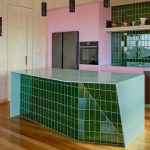Aesop Restores Qing-dynasty Hall for New Store
For Aesop’s first retail space in Suzhou, China, the Qing-dynasty era Phoenix Hall was meticulously restored, with the interior mirroring the heritage of the exterior.

GALLERY
Text description provided by the architects. As the first soft rays of dawn paint the cobblestone street of Cangjie in soft hues, an autumn breeze carries not only the crimson leaves from Hanshan Temple but also a mysterious guest who had silently slipped into the tranquil city of Gusu.
Nestled in the heart of the ancient city, adjacent to the Xiangmen Wall, Cangjie is a historic commercial district that carries the treasured memories of Suzhou. It warmly welcomes visitors with its peaceful atmosphere.

Hidden deep within the bustling alleyways, a tranquil courtyard houses the Phoenix Hall, the sole Qing Dynasty architecture in Cangjie to be meticulously restored. This historic gem, a testament to our respect for the past, now serves as Aesop’s first home in Suzhou. Bathed in the interplay of light and shadow that dances across its whitewashed walls and traditional black tiles, Aesop engages in a poetic conversation with the timeless beauty of Jiangnan Watertown.

The design’s core concept revolves around reimagining the space within the constraints of traditional architecture. The goal is to seamlessly integrate modern functions while crafting Aesop’s distinctive, brand-centric spatial experience. Inspired by conventional garden architecture, the spatial division draws inspiration from the concept of ‘shade’, a typical design element that partitions the space into a central ‘hall’ and surrounding ‘rooms’. The ‘hall’, an open space, fosters social interaction and imbues the space with a sense of ceremony. In contrast, the ‘rooms’ offer a more private and enclosed experience. This duality of spatial qualities perfectly aligns with Aesop’s spatial requirements.

Product shelves integrated with the ‘shade’ are strategically positioned along the existing beams and columns, seamlessly fulfilling functional requirements while creating a sense of spatial hierarchy and enhancing the overall experience. The south facade facing the street features six inviting doors that serve as the main entrance. The gable wall as the secondary entrance disperses the flow of visitors while offering glimpses of the enchanting garden with its swaying trees and gently flowing water. The iconic central sink, the core feature of Aesop, is positioned in the central ‘hall’. The generous space allows visitors to comfortably try out Aesop’s products and engage in casual skincare consultations. The ensuite sink, fragrance armoire, and seating area are nestled within the surrounding ‘rooms’, offering an intimate experience.

Silk, a cherished possession of Suzhou, is extensively utilised throughout the space for its soft and sheer texture. The ‘shade’ adhered to traditional proportions while substituting metal and semi-translucent silk for the wooden framework and intricate carvings, conveying Aesop’s concise and refined modern aesthetic. Stone, an essential element of Suzhou Garden, with its natural textures and calming hues, is the material for central and ensuite sinks exquisitely inlaid with copper. Fulfilling functional requirements, the gently flowing water and the placement of the sculptural stone sink, reminiscent of scenic stone formations, echo the “stacked mountains and flowing water” aesthetic that defines Suzhou Garden. By employing traditional materials and craftsmanship, we create a profound connection to the local culture, and heritage is forged.

In the heart of the ‘hall’, a modern lantern enveloped in silk softly illuminates the space. Adorned with Suzhou embroidery, one of the four primary traditional embroidery techniques, the lantern transforms into a canvas for exquisite needlework by Su embroidery artists. Inspired by the painting of Qing Dynasty artist Fan Qi, a Gusu painting scroll gracefully unfurls in the air, narrating the gentle tales of Jiangnan. Deep within the ‘room’, an elegant fragrance armoire that beckons like a mysterious treasure cabinet, inviting for exploration. Gracefully supported by slender stands, the cabinet doors are accented with delicate copper ring handles, echoing the traditional furniture of the Qing Dynasty. Carefully selected antique furniture is scattered throughout the space, reducing our reliance on new resources and breathing new life into these cherished pieces.

By embracing the present, traditions can truly be passed down and perpetuated. From space to craftsmanship, Aesop reinterprets Jiangnan traditions through a modern perspective, incorporating a sustainable lifestyle and offering a tranquil sanctuary amidst the urban clamor.
Aesop Store
Location Suzhou, China
Architect Offhand Practice
Photography Fangfang Tian
The properties of Staron® Solid Surfaces make them ideal for creating captivating design details. Suitable for various aspects ...
New York-based Studio Becky Carter has reimagined the compact 450-square-foot interior of Loma, a bar in Providence, Rhode ...
Sydney’s iconic Sirius Building has undergone a transformative restoration by architecture studio BVN in collaboration with developer JDH ...
The Palazzo Capponi, a historic 16th-century gem nestled on Via di Ripetta in Rome, has undergone a remarkable ...
The perfect blend of three natural stones, including two types of limestone – one from Southern Italy’s Puglia ...














